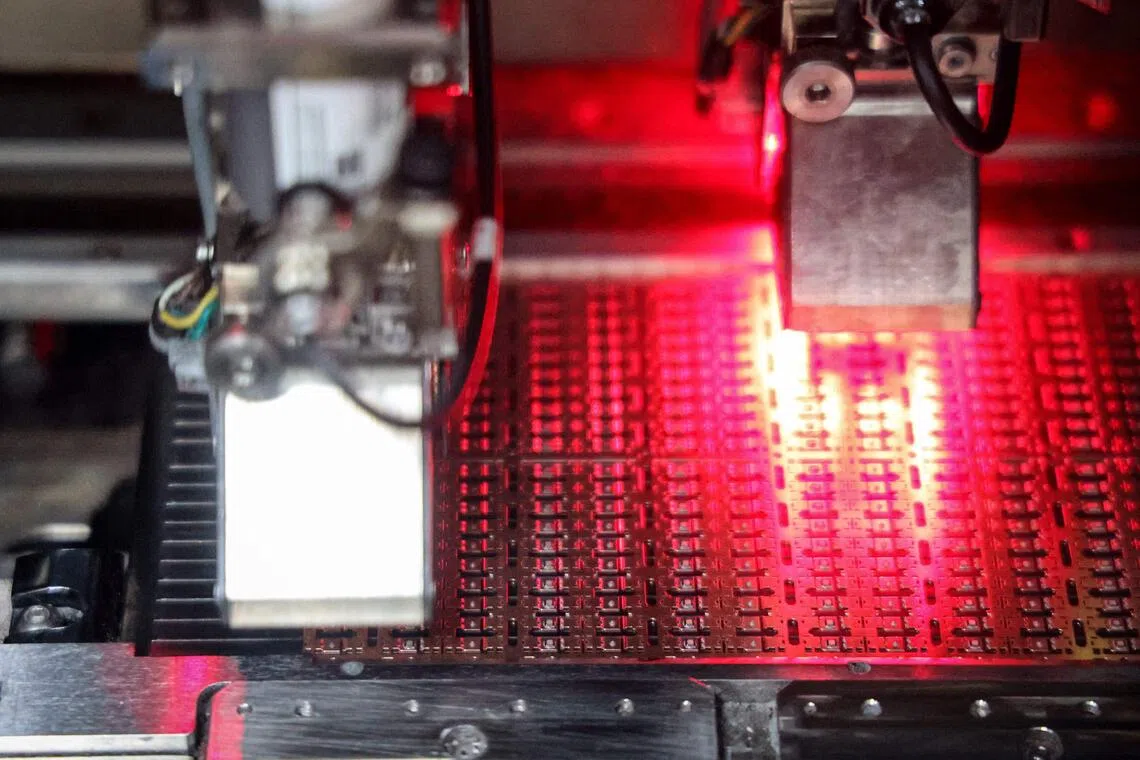Global chip sell-off erases $654 billion in market cap as lofty AI valuation fears mount
Sign up now: Get ST's newsletters delivered to your inbox

The pullback signals the growing unease over the sector’s earnings potential and elevated stock valuations.
PHOTO: AFP
Follow topic:
HONG KONG - The global sell-off in semiconductor stocks accelerated on concern over lofty valuations for some of the artificial intelligence boom’s biggest winners.
Shares of South Korean memory maker Samsung Electronics plunged 4.1 per cent on Nov 5, while its rival SK Hynix fell 1.2 per cent. Japan’s Advantest dropped 6 per cent, while Asia’s largest stock Taiwan Semiconductor Manufacturing Co (TSMC) fell 3 per cent. All are suppliers to Nvidia.
Selling pressure trimmed roughly US$500 billion (S$654 billion) in combined market capitalisation from the Philadelphia Semiconductor Index on Nov 4 and a Bloomberg gauge tracking Asia chip stocks on Nov 5.
The pullback signals the growing unease over the sector’s earnings potential and elevated stock valuations, particularly if interest rates stay higher for longer. At the same time, a sense of Fomo (fear of missing out) is driving some investors to rush back in.
“I wouldn’t say buy the dip now – much of the rally wasn’t about fundamentals so it makes no sense to say it’s a value buy now,” said Ms Yah Chauwei, chief executive at multi-strategy hedge fund GAO Capital in Singapore. “But if some of the big tech names drop 15 per cent, 20 per cent, then maybe we can consider.”
Wall Street chiefs’ warning of an overdue correction have weighed on the sector this week, alongside reduced expectations for US Federal Reserve rate cuts and the prolonged US government shutdown. Hedge fund manager Michael Burry added to the sell-off with his disclosure of bearish wagers on Palantir Technologies and Nvidia.
Palantir helped trigger the meltdown on Wall Street with a forecast that failed to impress investors. A similar reaction to Advanced Micro Devices‘ post-market results and outlook amplified the impact on Asia’s trading session on Nov 5.
“It’s a sea of red across broad markets, and one that offers a gloomy and damp portrayal of risk,” said Pepperstone Group head of research Chris Weston. “We need to remain open-minded to the possibility that this could still further build. Simplistically, there aren’t many reasons to buy here.”
Some see the pullback as a good thing, letting some steam out of a rally that had got ahead of itself, and making stocks a bit cheaper. With global hyperscalers like Amazon.com and Meta Platforms pouring more and more cash into AI, chipmakers and other tech firms are expected to reap further benefits in their results and share prices.
For now, institutional and individual traders alike must grapple with day-to-day volatility.
Mr Vikas Pershad, an Asian equities portfolio manager at M&G Investments, was essentially up all night in Singapore following the market chaos.
“I followed until I went to bed, which is when the US closed at 4am, took a short nap and then got ready for Asia,” he said. “We’ve come so far, so fast, investors shouldn’t be surprised if this continues tomorrow and the day after,” he said, adding that it is a good time to watch for buying opportunities. BLOOMBERG

